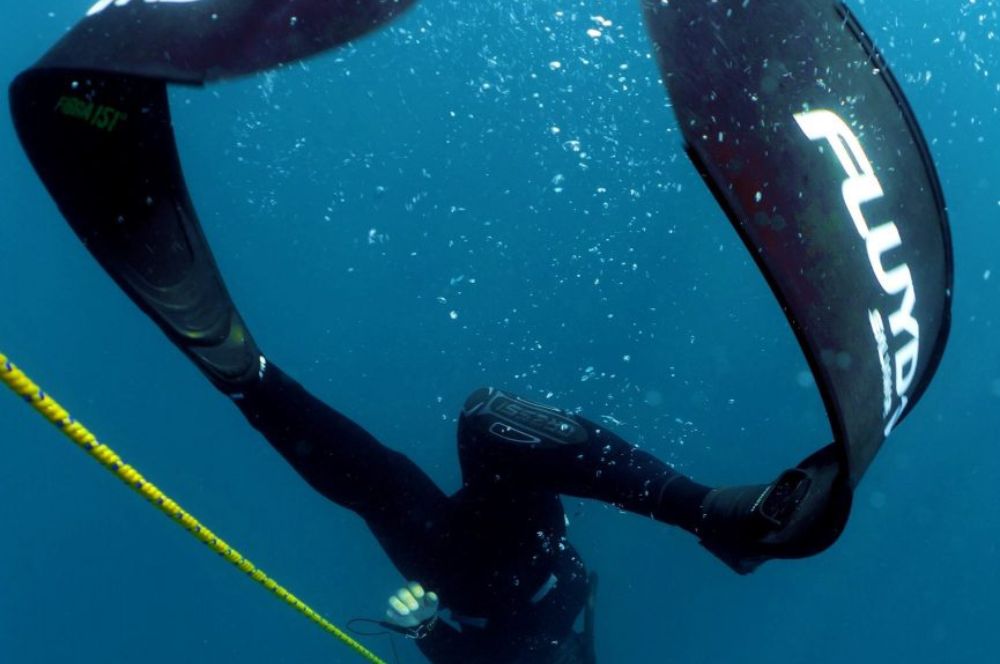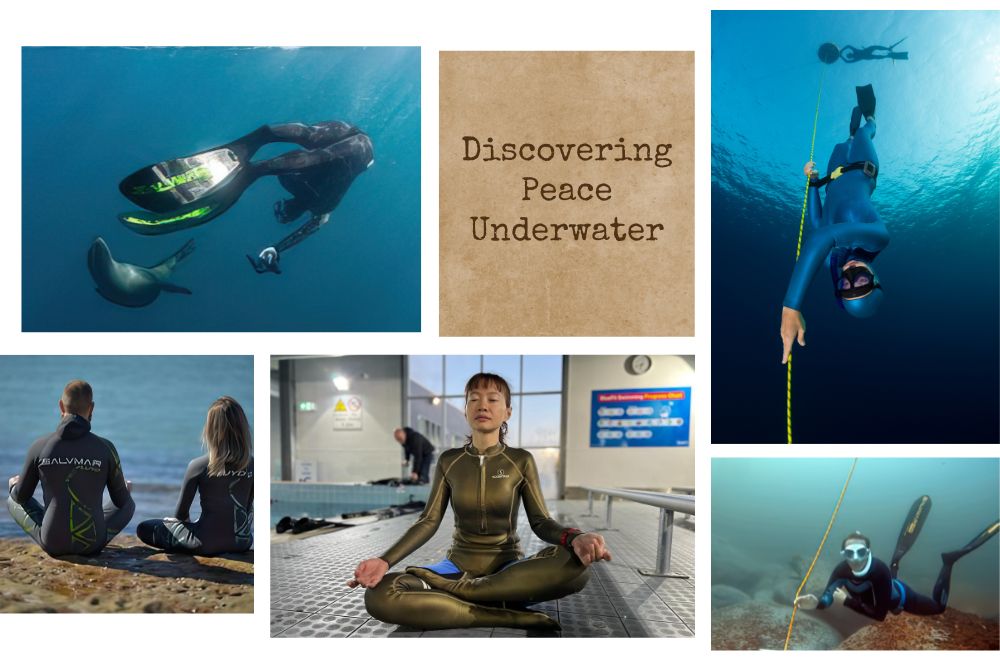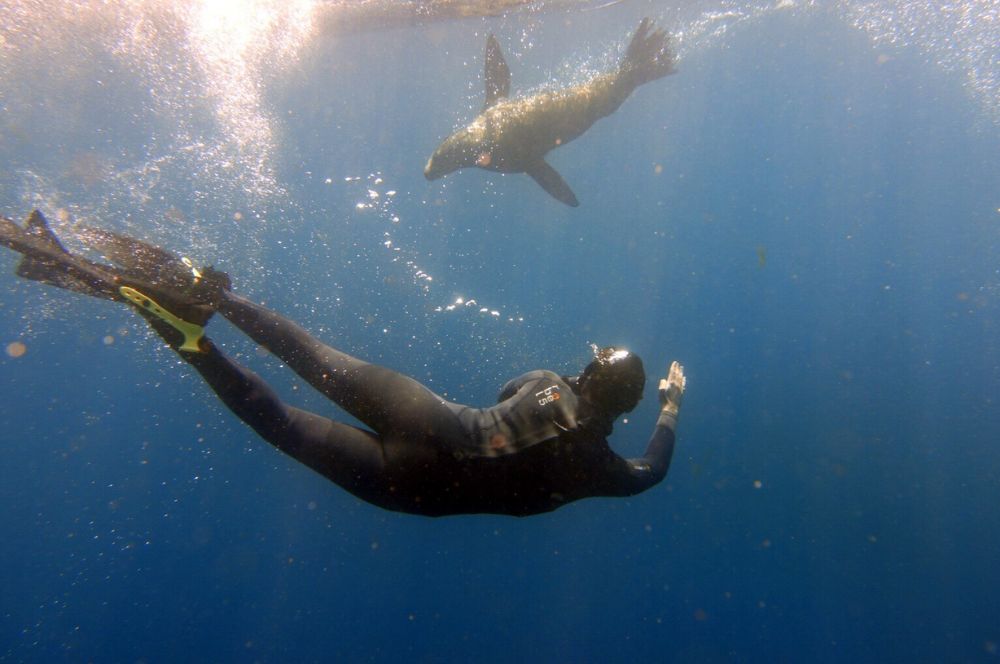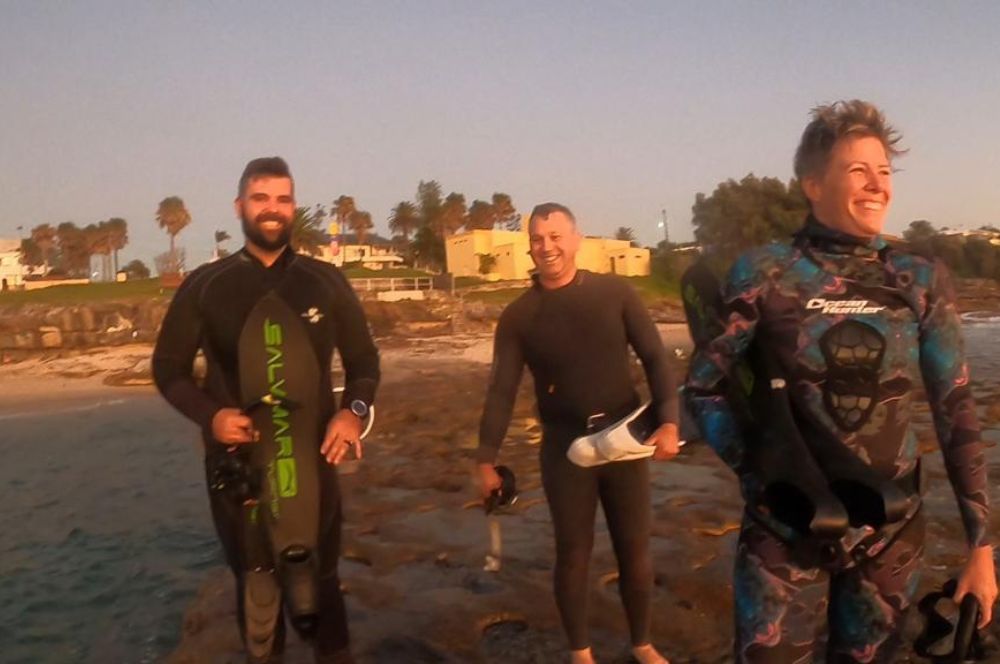You have 0 product(s) in your cart.
Abyss Scuba Diving
How To Develop Your Finning Technique

As the primary type of fins used by freedivers is bi-fins, this blog will focus on the technique for that equipment configuration.
Walking vs Finning
When starting to think about using fins, it’s helpful to get out of the water and look at how people walk. When we walk around, our legs are almost straight the whole time and move an equal amount forward and back. We don’t move our legs as if we were peddling a bicycle, only move them from inline with our body to behind us, or raise our knees up and down with the shins vertical and the toes pointed. These are the most common mistakes people make when first learning how to fin.
Why does this happen? Apart from the unfamiliarity of being in the water learning a new skill, the biggest issue is, unsurprisingly, the fins. When freediving we wear long fins and these displace much water, this makes using them difficult for some people as they learn to use their muscles differently.
Correcting mistakes from the get go
When you first start to fin, it’s almost certain that the biggest mistake you will make is having a strong backward stroke (the part where your legs and fins go back behind your body) and a non-existent forward stroke (where your legs move from in line with the rest of your body to out in front). This is because it is easier to move the fins backwards and more challenging to bring them forwards.
This means that you will not descend vertically, but will instead dive into and/or past the dive line as the backward stroke will be pushing your body forwards.
To correct this, it is helpful to practice your finning upright on the surface. If you are upright with your head out of the water, try finning. If your legs end up behind you, tipping you forwards, your forward stroke is too weak.
Once you start to improve your forward stroke, the tendency is to then to bend your legs at the knee, as this makes the stroke easier. Try not to fall into that habit – instead, keep your legs straight and concentrate on developing an equal forward stroke and backward stroke.
Don't be a Banana!
Whether diving straight down for depth or horizontally in the pool, if you can see where you are going, then your head is raised and your back is arched. I have drummed ‘chin to chest’ so much to some students that they end up tucking their head in, but then arch their entire body so that they can see where they are going, turning them from a streamlined freediver into one resembling a banana.
If you are not interested in diving for depth but want to use your freediving skills for recreational diving, photography or spearfishing then you might question the need to tuck your head in and streamline the body. My point is always this: If you use the correct technique, then you will be able to stay under the water for longer. You will dive to exactly the depth you want, and by descending vertically with minimal resistance, you will have more time at depth to look around and have fun.
Let the fins do their job
Another thing to consider when diving with bi fins is this: Get the fins to do the work for you. Once you have made a fin stroke, let the fin blade finish the movement before reengaging it. This will also help ensure you have a steady stroke rate.
You will also need to check that both legs are working with equal strength and that your fins fit snugly and comfortably. By minimizing any shift of the fins on your feet, you will maximize the transference of power through your legs, down through the blades and into the water. Use neoprene fin socks – they keep your feet warm, prevent chafing and can provide a nice, tight fit.
Choose comfortable fins that will enable you to easily master the technique without compromising power. Keep your upper body streamlined, your legs almost completely straight and move them equally backwards and forwards with a wide amplitude. Keep your hips level and your toes in line with your leg. Imagine you are walking, and let the blade finish a stroke before you start a new one.
RELATED POSTS
-
Sydney Freediving Guide | Beginner…

Sydney Freediving Guide…
First-Time Freediver in Sydney? Here's What You Need to Know Are you ready to embark on an unforgettable […] -
Mindfulness & Freediving: Discovering…

Mindfulness & Freediving:…
Mindfulness & Freediving: Discovering Peace Underwater Imagine diving into the ocean's depths, holding […] -
Freediving Fun: Getting Up Close and…

Freediving Fun: Getting…
Freediving Fun: Getting Up Close and Personal with Australia's Fur Seals If you're a thrill-seeker looking […] -
10 Stunning Shore Free Diving Spots…

10 Stunning Shore Free…
10 Stunning Shore Free Diving Spots to Explore in Sydney Sydney is a free diver's paradise, with many beautiful […]
Recent Posts





